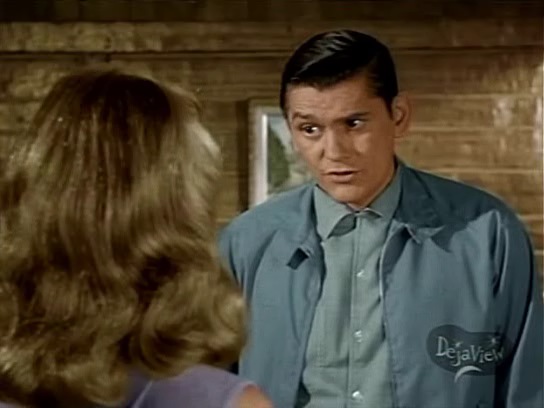We all want good, high res captures, if our computers can handle it, but issues like hard drive space, cpu speed, and codec capabilities have to be carefully analyzed to get the best capture out of your system. This is my story of my search for the best capture methods. I know this post is lengthy, but at least check out the pictures at the bottom of the page, showing you can achieve DVD quality captures using this method.
My current capture card is an ATI All in Wonder 9000 Pro. I capture mainly from digital cable, and my camcorder, through the s-video input on my card. I'm running an AMD XP 2400, with 512 MB DDR Ram @ 400 Mhz, on an asus MB with 280 Gigs of HD space.
Capture program's I've tested are WinDVR, freeVCR, ATI TV, and VirtualDub. In my opinion, virtualdub produces the sharpest captures. It allows the most optimization as well, through frame rate selection, audio compression, and so on, but producing the sharpest capture is my main reason for using virtual dub for capturing.
I've tested a dozen or so codec's, Including, morgan mjpeg, lead mjpeg, picvideo mjpeg, microsoft mpeg4, huffyuv, divx, xvid, and sigma mpeg4.
All of these codecs produce a comparable picture, but, some require A LOT more space to record than others. Huffyuv, for example, only compresses 2:1, filling nearly 20 gigs with 30 minutes of video. Morgan, Lead, and Picvideo are similar to each other, being all mjpeg, and produce similar size to quality ratios. These codecs give a lot smaller file size than huffyuv, but still produce very large files at higher quality settings than DivX or XviD.
Therefore I recommend using an mjpeg codec(picvideo is quite popular) or DivX/XviD. Mjpeg has a huge speed advantage over DivX/XviD, requiring 1/2, to 1/4 the cpu power that DivX/XviD requires. Therefore, if your processor speed is lacking, you'll definately want to be using mjpeg, (or you'll drop frames like CrAzY) but you'll need gigs and gigs of HD space to record mjpeg at the highest quality.
If your processor can handle DivX/XviD, I reccomend using it. Through testing, the quality at the highest settings, is not a discernable difference than any other codec I've tested. It produces a sharp picture, smooth motion, and LOW filesize compared to all other codecs.
If you have S-Video input through your card, and your source has S-Video output, USE IT! it's a huge step up in quality over composite! Also, NTSC is broadcast in 480 lines of resolution, so set your frame size to a height of 480. Remember, if you're dropping frames at 640x480, or 720x480 using divX/XviD, you'll have to use an mjpeg codec, like picvideo, which requires far less processing power.
I capture at a rez of 640x480 (yuy2), 29.970 fps, 16bit stereo sound @44100Hz, using XviD at the highest bitrate (10000 kbit CBR). In advanced options, I check enable interlacing, which supports interlaced fields, set quantization to mpeg, which gives a sharper picture than h263 and set motion precision search to 5 or 6, ensuring smooth motion capturing.
Using these settings, I get smooth, clean, sharp looking error free video, that can give you 3 hours of video or more, in 10 Gigs of space. If you're dropping frames using DivX/XviD, use picvideo mjpeg, at quality setting 18-20, don't go lower than 18, as it sacrifices too much quality.
If you are converting the captured video to mpeg2 for dvd playback, you don't need to read further, the rest is on archiving the captured video in DivX format, to be played back from your computer, or DivX player, but check out the example pictures at the bottom of the page.
The reason I use XviD and not divx to capture, is because I encode the captured video (XviD file) using 2 pass DivX (finished product). 2 pass encoding always looks nicer than 1 pass. If I capture originally using divX, then encode the DivX capture file using divx 2 pass encoding, 2 pass looks worse than 1 pass, which isn't right. That was my initial reason for testing xvid (and then encoding the Xvid capture using 2 pass DivX), and I am very pleased with the final, 2 pass DivX encoded product, from the original XviD captured source.
Encoding my captures: (Also in Virtual Dub)I generally resize my digital cable captures to 544x408, using lanzcos3, you can apply any deinterlacing filters and sharpening filters you wish, for cartoons I like to use warpsharp, It makes cartoon much sharper and cleaner looking (use blur x1, and depth 40 - 76). For frame size 544x408, using two pass DivX, I use between 1000 - 1200 kbit/s.
If your playing your final product on HD television, or your monitor, you will probably want to use a deinterlacing filter. There are many you can try, but first try the deinterlace, blend fields in virtual dub, and go from there. If you plan on playing your final product on a standard def. TV, no deinterlacing is neccessary, but I would recommend you consider it, because HD is the future, and you probably will have an HD ready display soon.
When encoding your capture, I find using inverse telecine, which converts the frame rate from 29.970 to 23.976, produces the same smoothness in motion, but less frames, so it allocates more bitrate to each frame, producing a better looking picture, or allowing you to use a lower bitrate than before. To select this, or try it out, go to video, frame rate, and select at the bottom, under inverse telecine, Reconstruct from fields - adaptive.
Using inverse telecine actually deinterlaces some frames, but not all, if you wish to deinterlace properly, you still need to add a filter.
This method proves to produce the highest quality video, while not sacrificing your Hard Drive space. I hope my search for capturing excellent video is of use, if you have any questions or wish to see the test pictures I created testing this method, post a reply with your e-mail and I'd be happy to send you them.
The pictures posted are screenshots of finished encodes, @544x408, I had to slightly reduce the jpeg quality (50K pic size limit), but it's a fair example of the quality my method produces.
The Video captured is from digital cable source. Remeber, your capture can only be as good as the source you take it from.

+ Reply to Thread
Results 1 to 1 of 1
Similar Threads
-
Recording with high quality and good conversion methods (snagit & codec q.)
By mukunku in forum Newbie / General discussionsReplies: 7Last Post: 14th Apr 2010, 00:43 -
Analog Video Capture - Which of the following methods is best?
By nharikrishna in forum Capturing and VCRReplies: 4Last Post: 30th Mar 2010, 23:46 -
How To Capture PC Video In High Quality To DVD And Blu-Ray Disc
By blazin-j in forum Newbie / General discussionsReplies: 15Last Post: 23rd Oct 2008, 08:33 -
Is one of these capture methods better for quality than the other or equal?
By twolf13 in forum Capturing and VCRReplies: 3Last Post: 20th May 2008, 11:12 -
Are there any methods to get a Ford oem Navigation unit to play dvd video?
By marc32 in forum Newbie / General discussionsReplies: 0Last Post: 4th Jul 2007, 23:11






 Quote
Quote